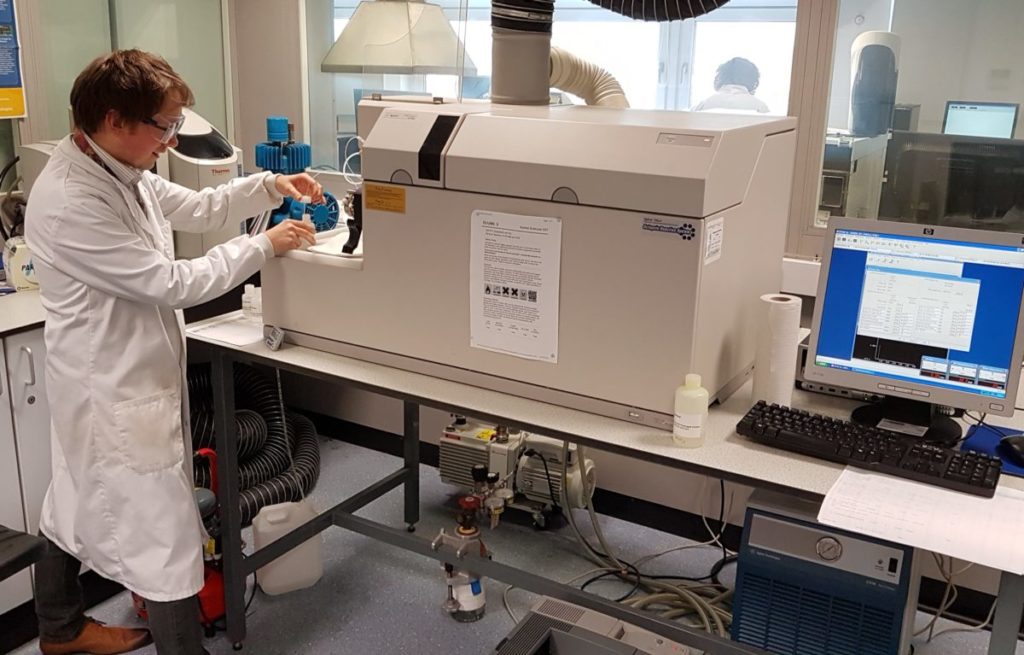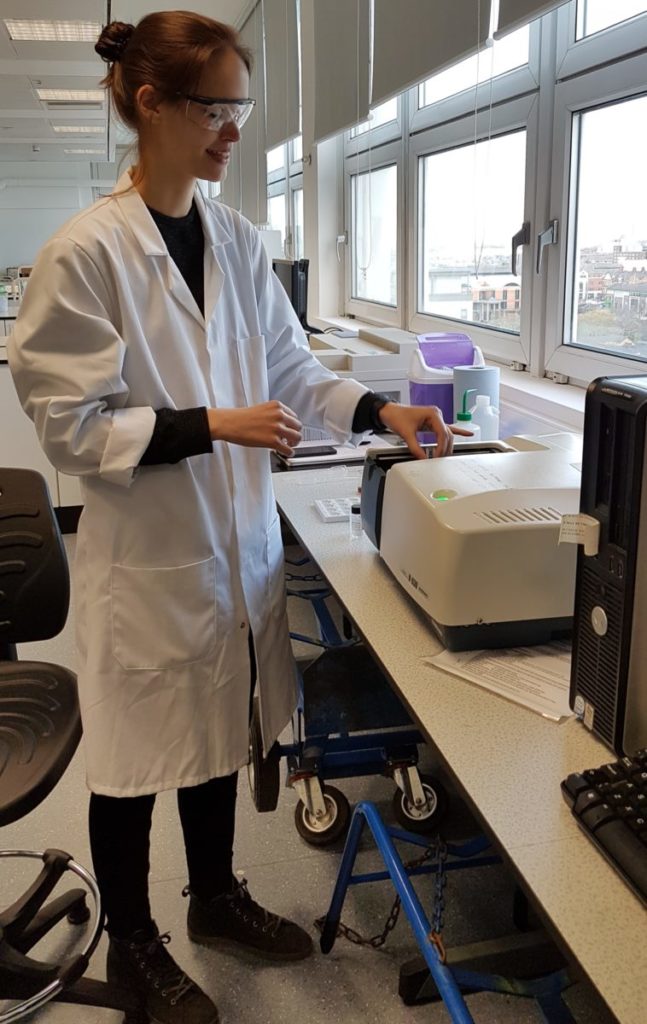Hello all!
Recently, the TUBA team has been investigating how best to analyse soil at Vindolanda. This is very important- I mean, it IS what makes up the site. And so, Helga and myself have been trialling ICP-MS and XRF. But before any of that, we donned our chef hats and got to cooking, though by cooking, we were heating up soil to remove the moisture and determine how much organic matter is lost after heating.
Doesn’t sound so tasty, I know. But look at the lovely array of brown, like looking at a student’s first attempt at a dinner party!

Next, we got to dissolving soil in acid with a microwave digester (you wouldn’t want to warm up your porridge with this), before kick-starting the dilutions game. My apologies to the technicians, for upping the department’s nitric acid usage from 2 L a week to 20 L a week. Ahem. And so, the ICP-MS examinations began, and proceeded over several weeks. Longer than expected, thanks to the iron levels because ten times higher than the calibration, and thus requiring yet another dilution. Oh dear!

After testing out the ICP-MS, we began using the XRF. Imagine an X-ray gun but too heavy to hold still for ten minutes and without the superpowers (so don’t be getting any ideas!). After working some Blue Peter skills and building an impromptu XRF holder, we quickly began to love this method over the ICP-MS. The speed! The reduced error! The portability! The handy bleep sounds!!

So yes, some successful testing indeed, though a shame it took much longer than expected (I’m looking at you, ICP-MS). What’s next for us? Well, I’m powering away at writing up my PhD progression ready for December whilst psyching myself up to excavate one of my microcosms next week. Helga is currently looking at which chemicals tannins and dyes in archaeological leather, which requires more training than an army cadet. Here she is trying out the UV-Vis:

That’s it from us for now. We look forward to telling you more about these exciting developments!
